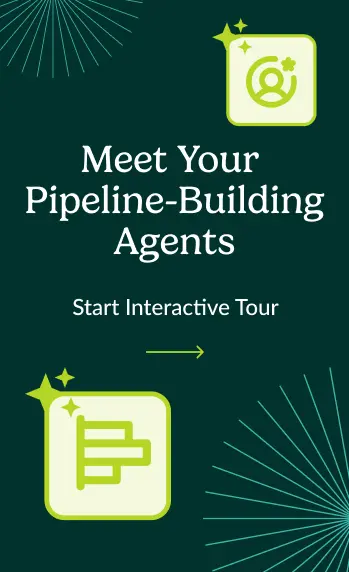Coaching 101: Using data to help a beginning seller
Published:

What does it take to be a good sales leader?
That’s a complicated question with a lot of nuance at play. But believe us when we say there’s an answer that you can apply to your mentorship practices to help improve every different type of seller on your team.
And the answer is coaching.
Coaching is built on a mixture of data, interpersonal skills, and solid leadership. To get there, you’ll need clear access to specific data that can help you identify and manage performance gaps. But you can only apply that data when you understand where your reps are in their professional development and how to adapt your leadership style to meet their needs — especially for first-time sellers.
Below, we’ll walk you through an example of a new seller, and how her manager was able to mine data to better coach her.
Meet Frankie, your newest seller
Frankie recently joined your team. A first-time seller with just one quarter under her belt, Frankie struggled to hit the key milestones on her ramp plan. It is fairly common for new reps who aren’t on track by their third quarter to quit. So as Frankie’s manager, you’re starting to panic about the possibility of losing three quarters worth of training and having to start all over again with a new hire.
How can you identify the source of all the troubles, and what can be done to help? We suggest diving into the data of Frankie’s performance.
Frankie’s top metrics:
- # of accounts touched
- # of opportunities created
- Opportunity create rate (i.e., what percentage of touched accounts converted to opportunities)
Frankie’s activity insights
Because Frankie is so new, she needs highly directive feedback. By diving into her activity insights, you can start to understand which of her behaviors should be reinforced and which should be adjusted. At a glance, you might be able to notice certain important insights into Frankie’s selling behavior. Be on the lookout for measurements of how Frankie’s performing in her role:
- How likely is Frankie to complete her steps on time?
- Is she adding fewer people than her peers are? Or is she adding more?
- How many activities is Frankie completing on a regular basis? And how does that compare to her peers?
By diving into your new seller’s activity to uncover insights, you’ll be able to see how Frankie approaches prospects. Is she taking advantage of multiple channels like email, chat, phone, and video conferencing? Or is she only sticking with one or two of those channels — to her detriment? Ther gives you, as Frankie’s manager, a golden opportunity to improve her performance by coaching her to make better use of the multiple channels available to her.
Finally, you can look at Frankie’s deals in the pipeline to see what can be done to close the gap and bring her performance in line with the stronger performers on the team. With a tool like Salesloft, you’ll be able to evaluate Frankie’s weighted pipeline and conversion rate right away, so those can be your primary focus as you steer her towards where she needs to be. The snapshot and activity insights have already provided some clues to areas that might help Frankie hit her numbers. But to identify the areas where the majority of the coaching needs to focus, you should review her conversion rates by stage.
We break down stages for you to follow based on a prospective customer journey with your seller:
- Suspect
- Discovery
- Alignment
- Proposal
- Negotiation
- Closed won
If you’ve noticed your seller Frankie has been losing a lot of her deals in the Discovery stage, you should coach her and help her come up with a plan to better nurture these customers by focusing on creating business cases, winning executive alignment, and executing a mutual close plan that has proven to be successful for other reps.
Today, sales leaders like you can’t afford to take anything for granted. You’ll need to pull out all the stops to keep the newest members of your team performing as the market shifts and the economy grows more and more turbulent. By taking advantage of the best tools, technology, and techniques available, front line leaders can coach the beginners on their revenue teams towards a long, successful career.





























